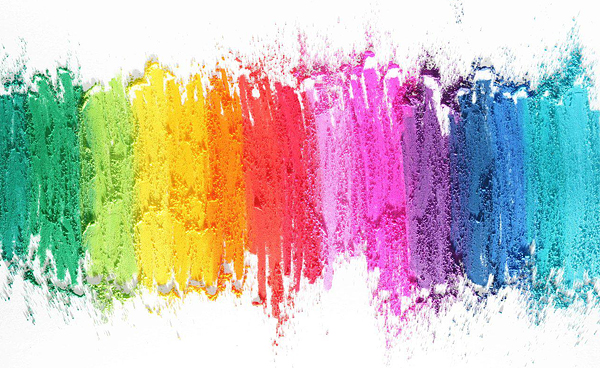Last Updated on February 23, 2024
Anyone can be a photographer. Anyone can sell their photos and make money from their photos. This is not to say that everyone will have equal talent at photography, nor will everyone have equal success at making money from photography, if this is the goal. Anyone can be a hobbyist photographer.
In this article, we will skip right to the available income-generating options assuming that you are looking for places to sell photos you have already taken or photographs you plan to take in the future. We will discuss six different methods for selling your photographs. Let’s get to it!
[heading color=”black”]Stock Photography[/heading]

Stock Photos are images that are not taken for a specific product, company, or service, but is a generic or “stock model” that can be used for a variety of purposes and a lot of times more than one purpose.
For example: Whereas a large hamburger chain like McDonald’s might set up their own (typically medium to large scale) photo shoots for their specific products, on the other hand a local diner or bar/grill might purchase some stock photos of hamburgers to use on their menu and promotional items.
Ever notice how a lot of the images on take-out menus look the same?
The main benefit to using stock photos rather than setting up a photo shoot is cost. Some businesses do not have the budget pay for hiring a photographer and setting up photo shoot, which could entail additional expenses for hiring models, make-up artists and hair stylists, renting a studio, and also potential post-production costs.
Stock photography is usually performed by professional photographers and most of the stock agencies (we’ll get to that shortly) have quality requirements and creative criteria. So – you know you can get good to excellent photographs to use without spending as much as you might… though there ARE stock photographs which do cost a pretty penny due to licensing rights (another topic we’ll touch upon).
There is also no shortage of photographs or photographers out there, so for most of the common items someone might need stock images for – pets, plants, household items, landscape scenes, etc. – there is a plethora to choose from.
But at the other end of the scale you have larger usage needs (such as a national magazine or news site) photos which include recognizable people/celebrities, buildings and privately-owned places, brands, exclusive events, etc. where one would need permission to use the photos – that’s where we pay the piper, er – photographer, photographed subject(s), property-owner, or photo-owner.
Let’s go more into these two types of stock photography.
Micro-Stock
Micro-stock is the type of stock photography aforementioned where typically the budget is less and the need for one-of-a-kind imagery is probably NOT as much of a priority.
There’s a big potential to make money selling your photos on micro-stock sites and there are a number of benefits.
The Advantages of Selling Your Photos on Micro-stock Sites:
- You don’t need much experience to sell on micro-stock sites.
- You can sell photos on micro-stock sites from home.
- You can select and sell nearly any subject matter of photos that you’d like.
- Once your photos are accepted and up for sale – they’re for sale for good! Great long-term passive income (eg. income you don’t have to constantly work for – they sell on their own!)
The Disadvantages of Selling Your Photos on Micro-stock Sites:
- It’s hard to get photos accepted.
- Commissions are relatively small.
- Competition is very great.
- Payment takes PATIENCE.
Anyone who fulfills the requirements for any particular micro-stock site can start selling stock photos immediately.
Getting accepted, however, can often prove the trying and sometimes discouraging part.
In additional to technical requirements, most micro-stock photo agencies have creative criteria as well.
Firstly, you may have to go through a training tutorial and/or test in order to be approved as a stock photographer. This application may include a review of some sample images. If your images are not up to par, you will be rejected. Each micro-stock agency has its own standards for acceptance and I would encourage you to read their individual guides and requirements prior to submitting in order to save you some time in the long-run.
Secondly, after being accepted – then each image you upload into your online stock photo portfolio will have to be approved before going live for sale.
Your photos will be inspected for technical quality on both digital file aspects as well as photographic expertise.
Some of the Technical Requirements May Include:
File size: The larger (in MB) your photo files are – the better. Even better, shoot RAW.
Resolution: Again, bigger is better. Keep your original files as uncompressed as possible, always shoot at the highest quality your camera can muster.
Pixelation: Blurry is bad. (with the exception of aesthetic intent) Sharpness is good. View your image at 100% actual size and if you can see any pixels – that’s bad.
Retouching: Your images will be personally inspected by a human who will zoom in to see if any obvious sizes of (bad) retouching are apparent. This is not to say, don’t retouch your photos. You definitely should retouch your photos. But retouch well.
Lighting: The micro-stock inspection human will also look for your lighting quality of your photo. Most photos with “hot spots” or over-exposed areas will be rejected, as will any photos which are too dark. Any photos with big shiny spots on someone’s forehead or obvious glares from flash photography will surely be rejected. Lighting is a skill which takes some experience and study – this is an area that could separate the professionals from the amateurs.
White Balance: Another thing to watch is the “white balance” of any submitted photo. I won’t go into the technical details of this, since that’s for another guide, but the gist of this is you want the white in your photos to be white (color hex code #FFFFFF), the blacks to be black (#000000), and the grays to look gray (#).
This can be most easily achieved at the scene of the photo; using either a gray balance card, or in a pinch, anything that is bright white, like a piece of paper or person wearing a white t-shirt. Then, a custom white balance is set using the camera’s settings menu.
The other way of ensuring your photos are properly white-balanced is to do it in post-production, which can be hard but often it’s your only option, such as when you’re shooting on-location or shooting an event.It’s much easier to take the time to get the picture perfect white balance when you’re in a controllable shooting environment, such as an indoor studio photo shoot with lighting equipment.
But if you have to do it in post, the most important thing is to make sure your computer monitor is calibrated!
If the color of your monitor is off, then your color editing will be off before you even begin!
There are various ways to test the color and to color calibrate your monitor, here are three basic ways.
- Use your computer’s internal settings. Somewhere in your computer’s control panel and/or using the monitor buttons (on a desktop) there are display settings and most likely some built-in calibration tool. Try this first.
- Use online diagnostic tests and tools. There are some free tests you can find online which can help check the accurateness of your screen color calibration, as well as the brightness, sharpness, and other options. Use caution when relying on these methods though, since accuracy can vary.
- The best method that will provide the most accurate screen and/or monitor calibration would be to use color calibration software. There are various different products available on the market, so if you have budget for a software purchase or you just want to get the best possible color accuracy for your photography, then consider purchasing one of these.
Don’t assume because your computer is brand new that your screen is color calibrated. It’s probably not. Definitely run through your computer’s built-in screen settings first and then take it from there.
Besides technical quality assurance, there’s also a set of criteria for the creative aspects of your photos. Your photo(s) may be rejected simply because it doesn’t meet the agency’s standards from a marketing perspective.
In other words, neither the major stock agencies nor the micro-stock sites have any use for images which no one else wants to buy either. Stock photo buyers are looking for specific types of stock photos, so keep that in mind when selecting photos to submit and also when shooting for stock.
Stock Photography Continued
If you are at the level of professional photography where you have high-quality equipment, expertise, and experience – then you may want to move into the business of high-end stock photography.
The way to do is this is to gather your best stock photos into a pretty package and visit each of the major stock photography agencies’ websites, find their submissions page, and submit.
It’s as simple as that.
Or as difficult, since the standards for major stock photography are much higher and there is a lot of competition. It may take days or weeks to hear back from any application also.
The benefit of applying to and hopefully being accepted into a major stock agency is that you can;
A – Go on and/or be given assignments, which is generally guaranteed (and relatively quick) payment unlike micro-stock sites where you have to wait for downloads and to reach earnings minimums before cashing out, and
B – You will make considerably larger commissions per photo because of the licensing & usage rights.
Major stock photo agencies deal in large-scale usage; such as for television, nationwide campaigns, product launches, or editorial publications.
In the case of large-scale usage, the buyer of a stock photo must pay a variable cost depending on how/where the photo will be used. Additionally, the images often contain persons, events, or property which may require special permissions and/or licensing.
Note: For ANY type of photography sales – for stock usage, in merchandise, for publication, or otherwise – ANY photos sold for profit (eg; commercial use) must have the proper photo and/or property release forms signed by ANY and ALL identifiable subjects in the photos.
Here is a sample Photo Release Form by iStockPhoto that you can print and use.
Here is a sample Property Release Form also by iStockPhoto.
Other agencies may have their own release forms to download.
If you can recognize him/her/them/it – you need a release form to sell it!
Here is a list of Micro-Stock Agencies where you can sign-up to sell your photos.
Top Stock Photography Agencies – Apply Within (if/when you’re ready! Good luck!)
These links will take you directly to the Contributor Submissions information for each agency
[heading color=”black”]Get Published[/heading]

Get published. Sounds simple right? Far from it and often far less glamorous than it seems, though it is a kick to see your photos in use somewhere, this feels just as exciting whether it’s seeing one of my photos in a magazine complete with credits in the margin, as it coming across one of my stock photos out there being used.
The not-so-glamorous part comes in the form of the paycheck. Though it’s a resume-building credit to be published in any respectable magazine, it’s also one of the lowest paying photo gigs out there, at least in terms of having your photos used commercially.
But we still want to be published right? Right!
How do you get your photos published, aside from being someone who knows someone or a friend of the band, and if you don’t have a photography agent.
Cold Submissions
One way of getting your photos published is the same method that has existed for as long as humans have engaged in business commerce, and that is COLD sales. In this particular case, I’m not suggesting cold calls – though it wouldn’t be unheard of nor unambitious – that would probably be a frustrating process without first having a direct contact of interest to speak with.
Instead, a great way to become published is to submit directly to a list of prospective publishers and/or buyers of your photos.
Ideally, you’ll want to decide which photo or photos you are pursuing for publication and then compile a list of potential clients, along with their contact info.
You may find some companies or publications are reachable by email or an online contact form.
But, in this day of too much email and even more spam, I would suggest preparing an old fashioned snail mail campaign.
And when I say “campaign” – this can be a short campaign or a campaign planned over time, depending on the feedback you receive and on how much you want it!
A short “campaign” might be as simple as a letter with link to your website or a customized designed postcard with your work. It could also be a package with a CD or DVD of a collection of images that are either available for sale or as a freestanding portfolio slideshow of your work.
If you wanted to put some extra marketing budget into your mail campaign, you could send your portfolio on a mini-USB flash drive.
Ideally, you will engage in a multiple “blast” marketing campaign if you are taking this route, as typically consistency and persistence produce the greatest results in marketing.
Start with a letter of inquiry or a postcard. Follow-up with a DVD. If you can get someone on the phone and you’re good like that, try to get the contact on the phone. However aggressive you want to be on your self-promoting marketing campaign or not, you can choose which tactics you feel most comfortable in.
Where do you find contacts and/or who to contact?
For me there have been two resources I’ve enlisted to find contact information for people I’ve sent direct mail campaigns to:
1 – The Photographer’s Market. This is an annual directory book which has tons of listings for publications, advertising agencies, newsletters, trade publications, book publishers, and other businesses that buy stock photos. The great thing about this directory is that many of the listings not only have direct contact info for photo submissions, but many listings have photo guidelines (which are important to follow if they are offered!) and some of them have the pay rates for accepted images. You’ll see rates for cover photos as opposed to insert photos for magazines. There are all different genres of companies and publishers, and the range of subjects they accept photo submissions for is surplus. There are places to submit your landscape photos (such as travel publications) just as surely as there are places to submit your fashion photos. Get this book on Amazon now.
2 – The mastheads. This refers to that long column of credits on one of the front pages of the magazines you want to be published in. Look for the “Photo editor” if you can find him/her. Otherwise, direct your cold sales pitch to whoever is closest to it. Art Director, Photo Assistant, etc.
If you are looking for the most success in submissions and without pissing anyone off with spam: Do your Due Diligence.
In other words, take your time, do the research, and send the best possible marketing package to the best possible prospects – personalized and tailored to each contact.
If you really want to be in ABCDE magazine – you should understand the kinds of photos ABCDE magazine publishes. Understand the content and make sure your photos are suited to the buyer. And if there are photo submission guidelines in place – ABIDE by them!
Personal Promotions
We touched upon personal promotions already in Part 1, with utilizing a mailing campaign. But there are additional methods of personal promotions I want to discuss briefly before moving on to our last section.
In addition to old-school salesmanship, you’ll want to use the modern marketing tactics of today.
- Put up a Website
- Build an Email Mailing List
- Start a Facebook Page
- Market on Twitter
- Upload on Flickr
- Join & participate in Photography Forums
- Submit to Photo Contests
These are just a few of the ways you can gain visibility to your photography brand.
I won’t go into detail about each of these marketing tactics now, but in future eCourses we will discuss personal promotions and self-marketing in more detail.
The essential part of Personal Promotions is to garner a larger audience for your work. You should also connect all of your photography promotional avenues together.
For example: You’ll want to link your photography Facebook page from your photography website and vice versa.
Cross-promotions will only expand the number of ways that people may come across your photos and items for sale.
Fill out your profile in Photography Directories and in your micro-stock profiles, forum profiles, etc., and create standard signatures with your main URL, so that you can capture traffic from all directions.
[heading color=”black”]Sell Yourself[/heading]

Prints
There’s money to be made by selling your own photos for yourself. You can set-up your own online store or put a store page on your existing website where you can sell print of your own photos.
Of course, the same rules of Photo Releases applies here – make sure you own all the rights to the photos you are selling and also, that you have photo releases and/or property releases signed by any recognizable subject(s) in your photos or anything recognized as someone else’s property, or intellectual property for that matter. (eg; brands, trademarks, labels, etc.) Even a street sign or legible sign in the background could be a problem for any photos you are selling commercially.
But let’s get back to business.
You can sell prints through a photography services or you could partner with print companies and/or picture framing businesses who offer special rates to photographers.
If you want to be totally independent of any paid services, you could sell individual photos yourself using a simple shopping cart integrated into your site along with a payment processing service like Paypal.
There are many ways of setting up your prints for sale, it’s just a question of how much time you want to put into it, or are you looking for the quickest, easiest, or most profitable system? There are different services and systems for each answer to that.
Here are a few services that I’ve used, tried, and/or heard about:
Instaproofs – This is a service where you can upload your galleries and then set your own pricing. They do not provide printing services, which is good because you can then choose your favorite printing company or use the most economical instead of the huge marked-up prices that some printers charge. This system has a lot of options, you can create picture packages, photo set prices, add special services or product add-ons, etc. The catch is that the processing fee is 8-15% – which can force you to mark-up your prices a bit more than some other services, in order to make a good profit. The galleries are great though, a lot of nice features, and I’ve processed some orders through them with success.
Other options:
Products
Similar to selling prints, you could also turn your photos into photo-merchandise and sell to your website visitors or to your photography clients, if you’re doing service-based photography as well.
Create a pet calendar or a travel calendar from your summer trip overseas. Use your photos to customize mugs and mouse pads or design some humorous greeting cards.
Here are Resources for Creating Photo Merchandise (besides prints) to Sell
Did you enjoy this article? Please support us and check out our E-books!
- Digital Photography Triumph – The Essential Guide to Launch a Digital Photography Business
- Business Branding – A Blueprint Guide for Beginners
- The Art of Productivity – Powerful Strategies for Getting Things Done
We hope you enjoyed this article! Please don’t forget to subscribe to our RSS-feed or follow Inspirationfeed on Twitter, Google+, and Facebook! If you enjoyed the following article we humbly ask you to comment, and help us spread the word!

